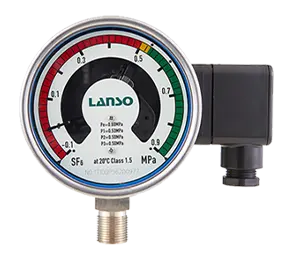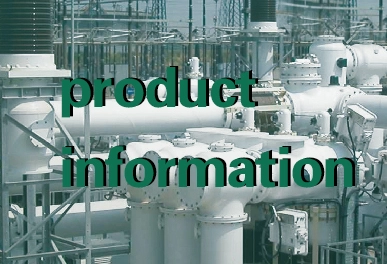In the power industry, SF6 relays play a crucial role. They not only help monitor the density of SF6 gas but also ensure the safe and stable operation of power equipment. This article will delve into the functions, working principles, and operational tips of SF6 relays.
Monitoring Principle of SF6 Relays
SF6 relays monitor the gas density inside sealed equipment containers through gauges connected to the gas chamber. The insulation performance and arc extinguishing effect within the gas chamber are closely related to the density and purity of SF6 gas. Therefore, accurately monitoring the density of SF6 gas is fundamental to ensuring reliable operation of the equipment.
Although the gauge shows pressure (measured in Mpa), why is it called a density relay? This is because the elastic mechanism inside the gauge can compensate for temperature changes, ensuring that the pointer always displays the 20℃ corresponding SF6 gas pressure. In this way, the SF6 relay can reflect the true gas density regardless of changes in ambient temperature.
For example, some old-style gauges do not have temperature compensation functions. Their dials provide temperature vs. pressure curves. Users need to manually compare the current normal pressure value at the given temperature to accurately determine the gas density. This design has gradually been replaced by more precise SF6 relays in modern technology.
Contacts and Applications of SF6 Relays
The dial of an SF6 relay usually has multiple pressure contacts (e.g., 0.5, 0.47, etc.). The output of these contacts can be connected to different control systems according to user needs. For the circuit breaker gas chamber, its rated value and alarm values are usually set higher than other gas chambers to ensure normal operation even under extreme conditions.
When using SF6 relays, the pressure contacts are connected to the low-pressure lockout relay circuit. When the pressure in the gas chamber drops to the set lockout value, the SF6 relay will cut off the breaking and closing circuits of the circuit breaker, sending a signal of control circuit disconnection. This process is crucial for ensuring the safe operation of power equipment, even if the circuit breaker operation does not have a lockout logic, its control circuit still has the capability to lock out breaking and closing.
Operational Considerations for SF6 Relays
When using SF6 relays, users need to be aware of the following aspects to ensure normal operation of the equipment:
Use of rain shields
The gauge of SF6 relays should be equipped with rain shields to prevent moisture from entering and causing false signals from the contacts.
Checking valve status
The valve connecting the gauge to the main body should remain open. Although the gauge has good sealing performance, there is still a slight leakage rate. If the valve is closed, the gas in the gauge cannot be replenished, which may cause the pressure to drop rapidly and trigger an alarm signal.
Monitoring abnormal pressures
Users need to regularly monitor the pressure changes of SF6 gas. If the monitoring system sends a pressure alarm or lockout signal, on-site inspections should be carried out immediately to confirm whether the pressure gauge pointer reading is normal and to ensure that the valves of connected gas pipelines are open.
Handling principles
If the SF6 pressure has dropped to the alarm value but not yet to the lockout value, maintenance personnel should be contacted. If the pressure has dropped to the lockout value or near zero, the operation power must be immediately cut off, the operating mechanism locked, and the duty control personnel notified to request the isolation of the faulty switchgear.
Related Article for Reference
Two Common Types of SF6 Relay in SF6 Circuit Breaker
SF6 relay plays a crucial role in SF6 circuit breaker, monitoring gas pressure changes to ensure the circuit breaker operates correctly. In this article, we delve into the basic principles of SF6 rela...
Wed 02 2024







